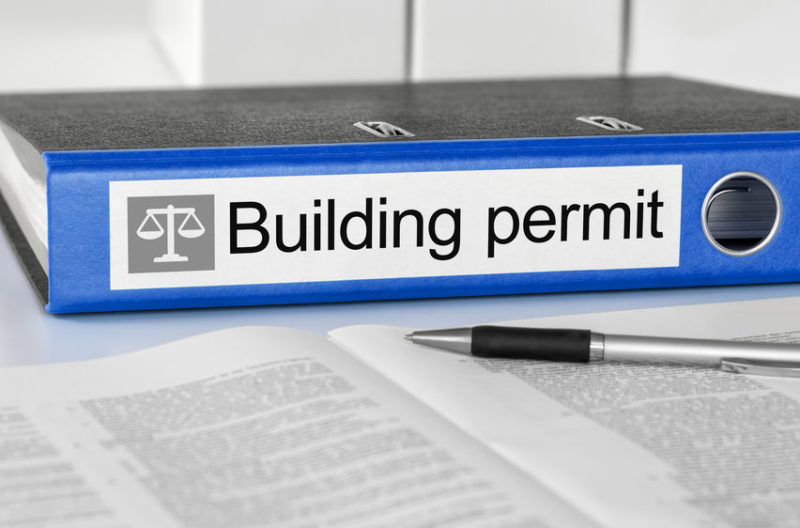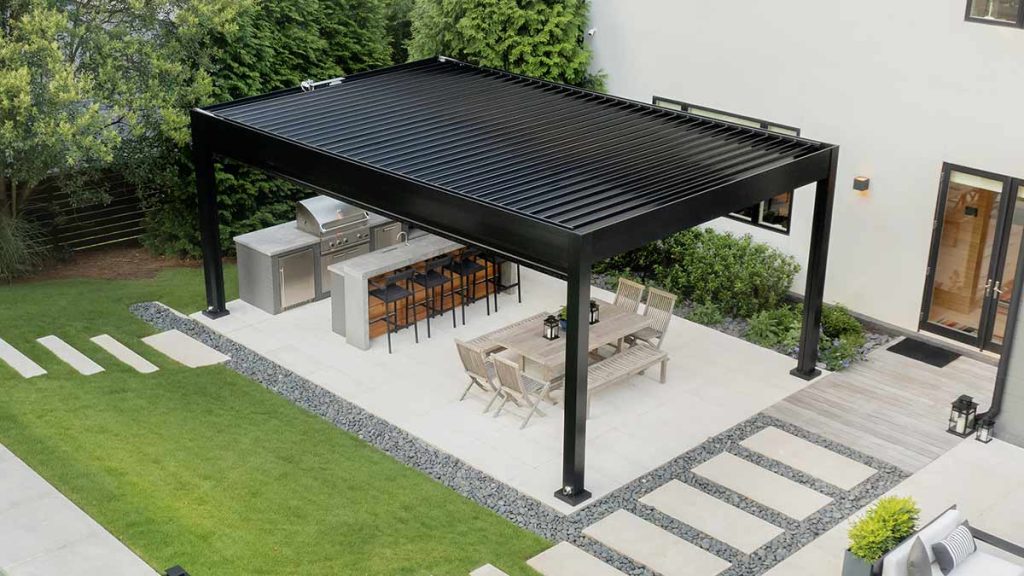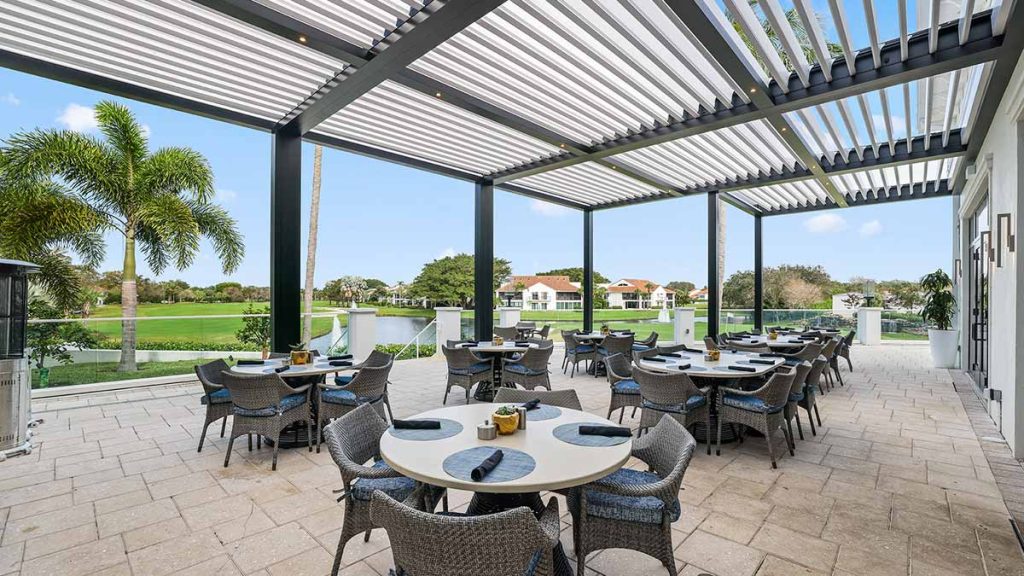When choosing to install a pergola, you can hire a contractor or do it yourself. The latter is considerably more work in manual labor and research, and will place any permitting requirements squarely on your shoulders. Installing a patio cover structure is similar to any outdoor home improvement project. It is subject to state, county and municipal regulations, such as zoning laws, building and fire codes, even historical district aesthetic guidelines, etc. Most locales will require you to obtain a building permit before construction begins, and your town or city will often have to approve your building plans.

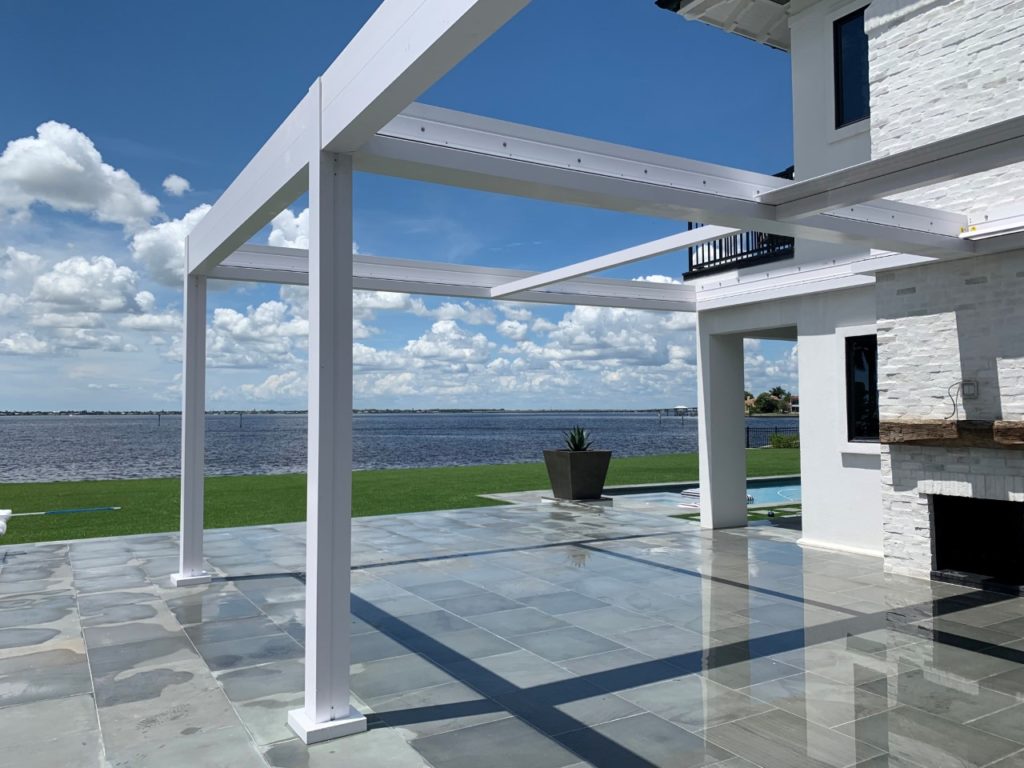

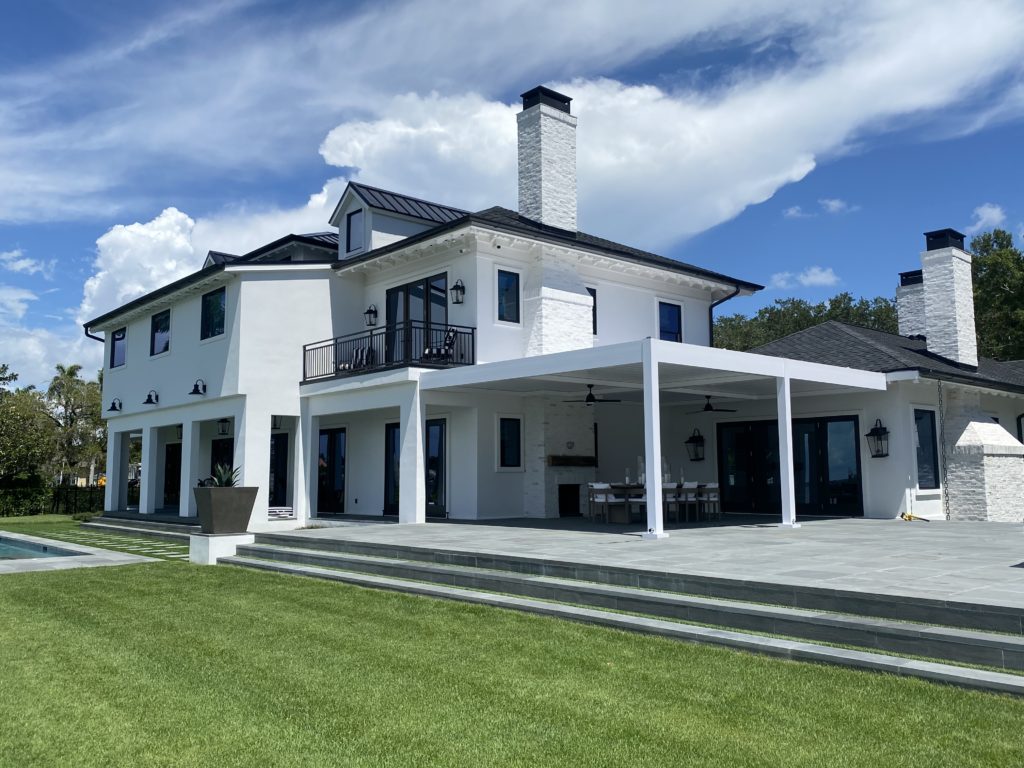
When choosing to install a pergola, you can hire a contractor or do it yourself. The latter is considerably more work in manual labor and research, and will place any permitting requirements squarely on your shoulders. Installing a patio cover structure is similar to any outdoor home improvement project. It is subject to state, county and municipal regulations, such as zoning laws, building and fire codes, even historical district aesthetic guidelines, etc. Most locales will require you to obtain a building permit before construction begins, and your town or city will often have to approve your building plans.
Whether you chose to work with a qualified local dealer, or DIY your pergola, you need to plan a design that fits your home’s architectural style and how you will use your outdoor space. Local building codes and permitting requirements in your city or town may impact those decisions. Pergola code requirements vary by state, country and municipality, but you will almost-always need engineer-approved project plans to secure the necessary permitting. In some places, you may actually need two permits, one for structural approvals and another for electrical permitting. In coastal regions, your pergola may need to satisfy requirements for high wind resistance, and in historic neighborhoods a local board may have requirements to ensure designs confirm with that “look.” So, its highly recommended to explore the regulatory requirements as part of your initial planning phase.
If you decide to ire the right contractor, a reputable one will be able to help you understand permitting requirements, and will likely obtain the necessary permits on your behalf. If your home is in a community with a homeowner’s association, you will also need to confirm what types of outdoor structures you can build on your property according to association bylaws.
Always Obtain the Necessary Permits When Building a Pergola
While it may be tempting to go ahead with the project without the correct permits, it is never advisable. Remember, the permitting process is in place for your safety, ensuring that the new construction is secure and stable and abides by building laws. Proper permitting is also a safeguard for your pergola investment. Homeowners may be subject to fines and penalties if a pergola is installed without the appropriate permits. Even worse, skirting permitting requirements may force you to take the pergola down entirely at your own expense. Not to mention, you won’t have a beautiful pergola to show for your hard work, and you will have to start the project over.
Obtaining a Planning Permit
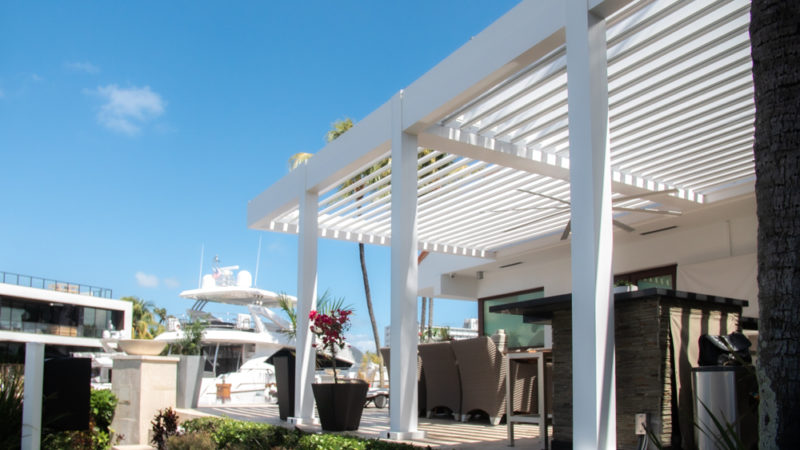
You will need to submit building plans to your city, town, or county. A certified engineer has to approve them as well. It is imperative this step is completed before materials are purchased and work begins. An official will review the plans for structural requirements and zoning, and either approve or deny them. Most local building officials will be willing to work with you to amend any portion of the plans to conform with local regulations, but a qualified local pergola dealer can often help you streamline this entire process. That local dealer will help you explore the design options available, and create “shop drawings” to envision your pergola. He will then have those renderings certified by a qualified engineer, all before the plans are submitted for local approvals.
Pergola Permitting Requirements: State vs. County vs. City Requirements
Homeowners are often confused about where to find building regulations. Building codes are usually determined by your state which establishes minimum safety requirements for buildings. In addition, your county and/or local municipality may have rules that are stricter than state regulations. Keep in mind that counties and cities can establish more stringent requirements than state regulations but never less strict. Understanding the local process, and confirming your compliance with each entity will be imperative for the rest of your construction project to run smoothly, and avoid potentially costly missteps.
Know the Pergola Permit Requirements for Your City or Town
When it comes to building codes, a rule of thumb is to follow the most local-to-you requirements because they incorporate state-level rules. If your city or town has no specific code, you should follow your county or state permitting requirements. In most locations, the local building official will have the final say on your plan and permit approvals. The local building department will likely have a checklist of the various local agencies/officials that need to sign off on a project in your neighborhood. In some places that could include environmental checks or historic preservation regulations.
Remember Your HOA
While homeowner’s associations do not set building codes, they can influence the installation of a pergola. If you are part of an HOA, be sure to check the rules regarding installing an outdoor structure. Some may limit why types of outdoor living structures are allowed, while others may simply prescribe the location, colors or design aesthetics of such a project.

What’s in a Building Code for a Patio Cover or Pergola?
Local building codes will define the structural requirements for a pergola, often setting maximums or minimums for the most common aspects of a pergola:
- Many city codes limit the highest point of a patio structure, often limiting it to no higher than 12 feet above the ground (though this changes by state and locality).
- Diameter, distance, and depth: Regulations often include details regarding the distance between the pergola beams, the distance between the posts, the depth of the foundation, and the diameter of the posts. These metrics can also be impacted by local requirements for storm resistance of outdoor structures.
Is a Soil Analysis Required to Build a Pergola?
If you plan to dig concrete footings for your pergola, you may need a soil analysis. A soil engineer will take a sample, and will test it to determine if your soil is strong enough to support a structure. You will need to research your state, county, or city’s building regulations to determine if you need a soil analysis.
Choice of Building Materials
Although many pergolas are made of wood, aluminum is a durable, and more aesthetically-flexible alternative. For example, pergolas manufactured by Azenco are constructed from made-to-measure aluminum of the highest quality. It allows us to offer an array of exterior powder coating colors to protect the structure and seamlessly fit with the surrounding architecture. Building codes for aluminum structures may differ from those for wooden construction. You will want to note the code requirements for your preferred building materials as you start into the design and planning process.
Attached or Freestanding Pergola: Different Permitting Requirements
Building codes dictate what is necessary to ensure a structure is correctly supported. For example, if you are installing a pergola attached to your house, the two support posts can sometimes be attached to existing concrete footings. However, building regulations typically require digging new concrete footings for a freestanding pergola to ensure stability. The local requirements for the depth and dimension of these footings will vary as well, for instance in coastal areas susceptible to high winds.


Considering Fixed Roof vs. Louvered Roof Pergolas
Building codes dictate what is necessary to ensure a structure is correctly supported. For example, if you are installing a pergola attached to your home, the two support posts can sometimes be attached to existing concrete footings. The local requirements for the depth and dimension of these footings will vary, and every project will be engineered for site-specific needs. For instance, in coastal areas susceptible to high winds, larger footers may be required beyond the specifics of the code.
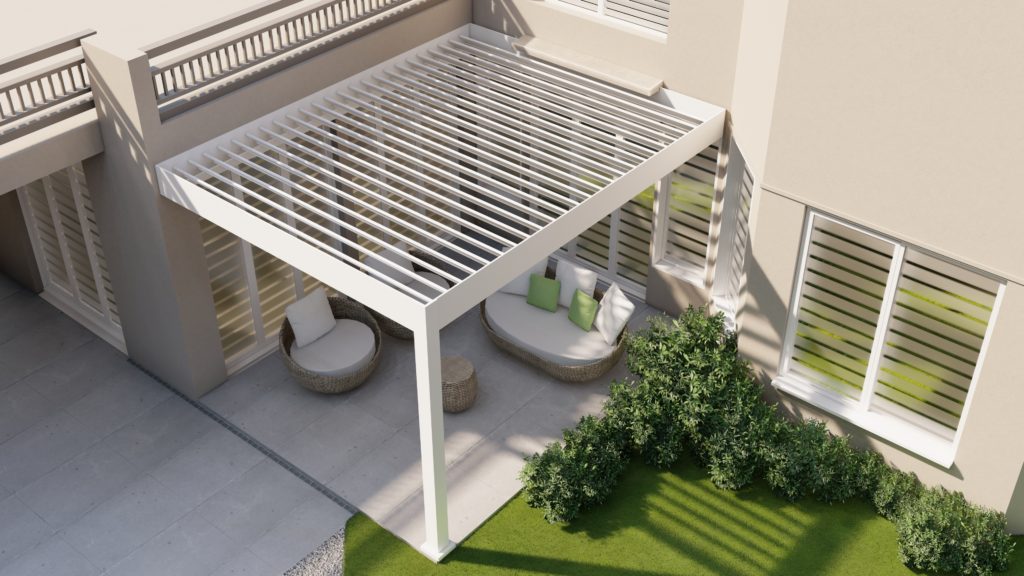
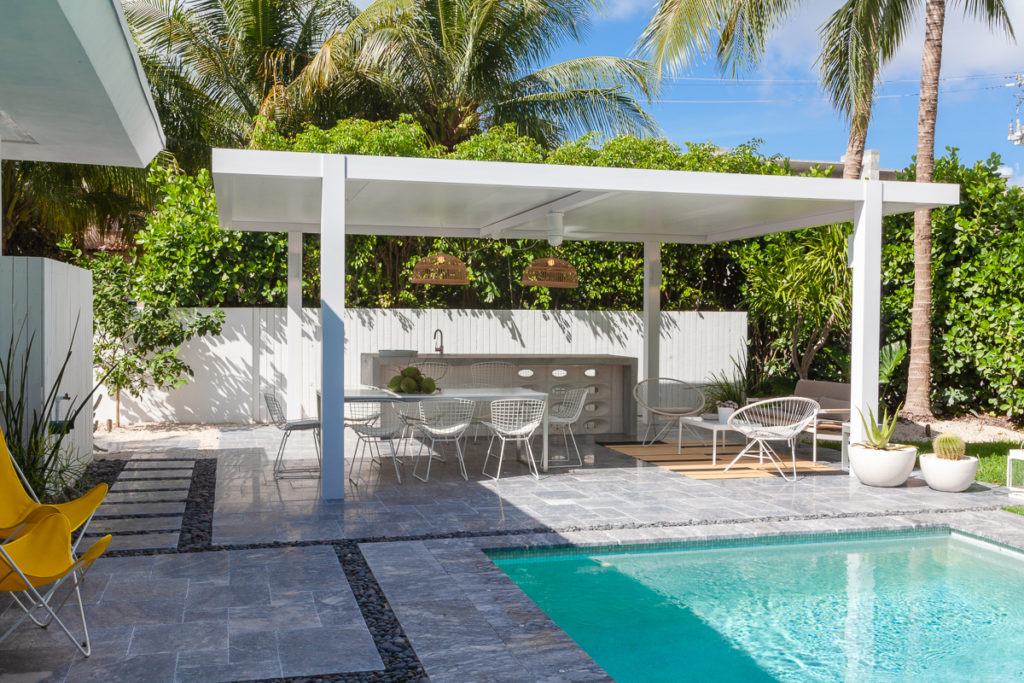
How Much Does a Pergola Permit Cost?
A building permit for a pergola varies by location. It can range significantly depending on the different levels of review and approvals. Some municipalities determine the permit costs based on the overall cost of the project, or based on square footage, in addition to the individual agency approval fees. According to HomeGuide.com, the national average for building permit costs tend to run from 0.50% to 2.00% of the total construction, thought these fees can sometimes range to 10% depending on local regulations.
Big cities usually charge more than small towns, so be sure one of your first questions of local officials is about the fee structure for permitting. If a contractor is building your pergola, they will usually handle the plan approval and secure the necessary permits for the project. The costs for these approvals and permits can sometimes be rolled into the overall project estimate, so be sure to confirm with your installer to ensure you are not duplicating efforts.
Are There Any Patio Coverings That Do Not Require a Permit?
Patio coverings, such as umbrellas and instant canopies, are not subject to building codes because they are not permanent structures. However, permanent outdoor structures, including most pergolas, do require building permits. While we cannot speak for other pergola manufacturers, we offer one solution that may not require a building permit.
The Azenco K-Bana is a fully-customizable modular cabana structure. It allows you to create a flexible outdoor escape for your deck, patio or not-so-level surfaces like a yard. The K-Bana includes self-leveling footings that adjust to the uneven ground. Because it does not need in-ground footings, the K-Bana can mitigate the need for a large scale permitting process. Be sure to check your state, county, and city’s building and zoning requirements before moving forward with any outdoor structure project. You may find that that the K-Bana from Azenco is an exception to your local building permit rules.


When to Hire a Contractor for Your Pergola Project
If you find researching your area’s building regulations a hassle, consider hiring a licensed contractor. A contractor will be able to help ensure your installation follows the building regulations. He will also obtain the appropriate planning and building permits. Beyond the intricacies of the permitting process, a qualified dealer will ensure your pergola is idIf you find researching your area’s building regulations a hassle, consider hiring a reputable licensed contractor who will do the work for you. A contractor will be able to help ensure your installation follows the building regulations and obtain the appropriate planning and building permits. Beyond the intricacies of the permitting process, a qualified local dealer will also ensure your pergola is ideally suited to your home. For instance, they will have the experience to make sure the louvered roof opens in the ideal direction so when you open the roof you see the sun or stars rather than the wall of your home.
In Conclusion
You will require a building permit regardless of the size or type of permanent outdoor structure you are building. Safety is paramount when it comes to building any outdoor structure. By obtaining the necessary planning and building permits, you will steer clear of penalties and avoid breaking building laws.
If you are hiring someone to build your pergola, verify their license and reliability. A builder can help you create the perfect pergola design for your space, and they’ll also ensure it’s built to your permit’s specifications.
Only licensed contractors can install pergolas from Azenco. We have a vast network of approved local dealers. Contact us today for a referral to a preferred contractor who can build the pergola of your dreams.

